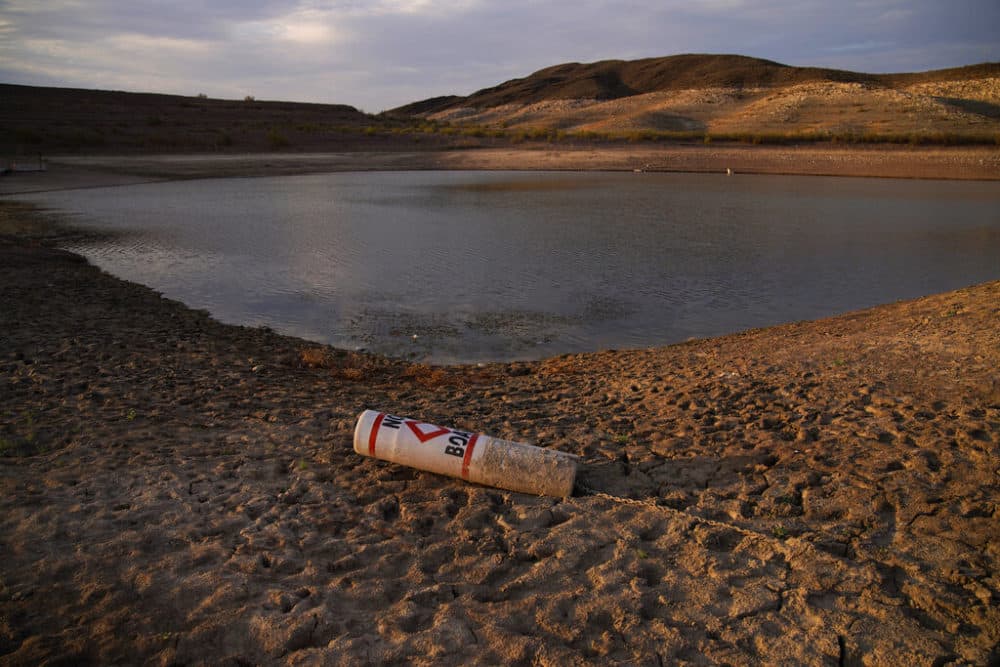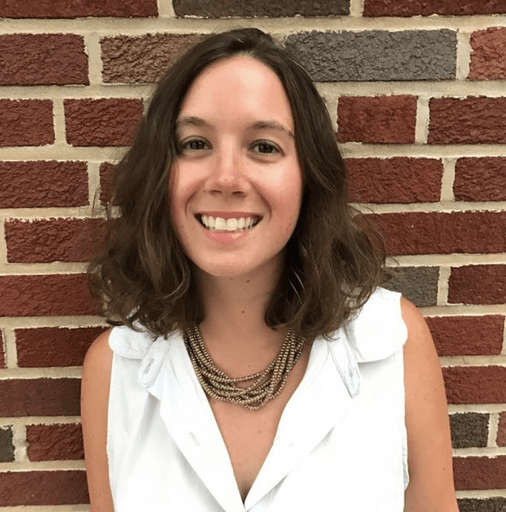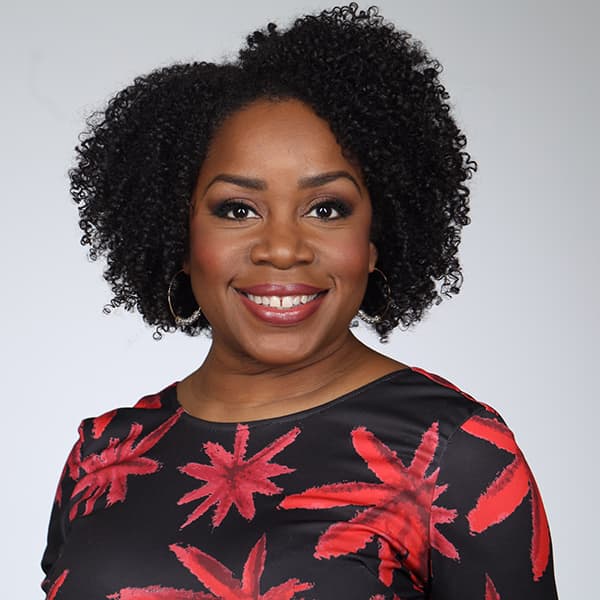Advertisement
What The Future Holds For Water In The West
Resume
Listen: How Western Droughts Impact Navajo Farmers.
For the first time ever, the federal government has declared a water shortage on the Colorado River.
Across the Western United States, reservoirs are low, temperatures are high and fires continue to rage. How did we get here?
Historian John Ross points to climate change denial.
Today, On Point: What the future holds for water in the West.
Guests
John Fleck, director of the University of New Mexico Water Resources Program.
Author of "Science Be Dammed: How Ignoring Inconvenient Science Drained the Colorado River." (@jfleck)
John F. Ross, writer and historian.
Also Featured
Roland Tso, a grazing official in the Many Farms area of Navajo Nation.
Haley Paul, policy director of the National Audubon Society in Arizona.
Interview Highlights
On the origins of Western expansion
John F. Ross: “I like to start with an anecdote. There's a fresh immigrant to the United States and he goes out to southwestern Kansas. And [he's] … found frozen to death in a thin linen jacket. And they discover his body, and they reach into his pocket. And they pull out this brochure that says, ‘Come to the American west. It's the Italy of America.’ And I like to think of that poor fellow back in the 1880s … [was a] casualty of the climate. … Because if you look back for the first half of American history, the American West was known as the great American Desert.
"Just a place that you needed to get through if you were a gold miner and you wanted to get to California. As quickly as you could pass through the American West, the great American desert, the better. It was not a destination. And then something happened. The narrative change, it flipped on its head right before the Civil War, and after the Civil War. When the whole idea, encouraged by boosters of all sorts, changed the idea for the American West being a desert to being an Eden where anything was possible. And that's where a lot of the problems we're seeing today began.”
On the history of the Colorado River Compact
John Fleck: "One of the really important things that John Wesley Powell did was he was one of the inventors of the idea of government doing big science to inform the decisions that we have to make when we're operating at this sort of continental scale. ... So as we were doing the kind of growth that the boosters wanted, that the nation wanted and John Ross has described, we increasingly needed to do really, really large things.
"You needed ultimately to have some big dams, some big water delivery canals, and you needed science to support that. And so the successors of John Wesley Powell in the U.S. Geological Survey, especially a guy named Eugene Clyde LaRue, were set out to measure the Colorado River and say, how much water do we have? Because in order to develop the West, we needed to have these sort of broad plans, and they required broad agreements of who was going to get how much water.
"So representatives of the seven U.S. states in the western United States came together in the 1920s to try to work out a plan. And the plan was sort of codified and written down in the set of rules that we call the Colorado River Compact. And what those rules said is, Who gets how much water? But what those boosters in the room negotiating that deal did was make the same mistake that the people who ignored Powell in the decades before that made.
"They just pretended there was going to be more water and there was going to be plenty of water to do all the things that they wanted to do. And so we ended up with this document that we call the Colorado River Compact. It's a little brief, like all five pages. It says you get this much water, you get that much water, go forth and build Hoover Dam, the all-American Canal, the Colorado River Aqueduct to Los Angeles, and on and on.
" ... We built all these things based on this presumption that there was plenty of water to do that. But in order to do that, they made the same mistake that the people who ignored Powell made. They just pretended there was more water than the scientists from their own government agencies. ... This wonderful character named Eugene Clyde LaRue, who is not as famous as John Wesley Powell, but I kind of think he ought to be. And he was saying, Wait, no, there's not enough water. You can't do that without running into problems. And yet we have the problems we have today because we ignored Powell's successors."
On how to address these systemic water system issues
John Fleck: "I have a reputation in this community as the optimist in the room, and people invite me to come talk at conferences because I'm this novelty act, right? 'This is good. We could do this. We can solve these problems.' And this summer has been really tough on my optimism. But I remain optimistic. I'm a child of the West. I grew up in Southern California using Colorado River water in New Mexico, using Colorado River water right now.
"And I am remaining here and I am optimistic that we can do this, that we can retain viable, dynamic, vibrant communities in these places that we know and love. But it's a lot more difficult than I think I thought five years ago when I wrote my first book about the stuff. And the things that make me optimistic is if you look around at the cities of the West, you see enormous water conservation success.
"So in most of the major cities in the western United States, water use is going down, even though population is rising. We've got the hang of this conservation thing. We may not have done enough of it, but we know how to move down that path really effectively in the future. Look around my neighborhood, there's a lot fewer lawns than when I moved into this neighborhood 30 years ago.
"When you look around to the farming communities and we need to remember that, you know, 70% or 80% of this water we take out of the Colorado River is going to irrigated agriculture. You see farmers being really, really good at figuring out how to succeed at growing crops and food for us with less water. But the squeeze is coming faster as a result of climate change, and the challenges are therefore far greater. So we can do this, but we need to get on it. We need to be moving down this path faster than I think a lot of us realized we needed to be moving."
What are the solutions to deal with this water shortage?
John Fleck: “Let me talk about the infrastructure bill first, because it's really important to communities like Roland in Many Farms in Arizona. There's a bunch of money in the infrastructure bill to help bring plumbing to people's houses and water to people's houses. Incredibly important, and especially in Native American communities. So that's key. And that's a place where money can help. We've already spent most of the federal money we need to spend to build up the infrastructure other than any country in the West. And so there's not a whole lot of advantage to more federal money to build more dams or pipelines, just don't have the water to put in them.
"What we need is more of these individual community conservation efforts, but linked through these collaborative agreements. And the problem is, you know, every community would prefer to have more water. Nobody wants to cope with less water. We use this. It's valuable to us. So a necessary precondition is for communities — and this is where I'm a little concerned about political leadership, especially in some parts of the basin and some of the states of the upper Colorado River basin.
"Being willing to have the hard conversations with communities to say, Look, that water that the Colorado River Compact promised you back in 1922, it just ain't there. Don't continue to expect the river to deliver that water to you because it says on a piece of paper that was signed in 1922 that that water is available, that water is not there. And, you know, one of the the truisms for me in Western water is when people have less water, they'll use less water. We're really adaptable. We can do that. We've got to recognize that.
"And that creates the opportunity to do conservation and to make collaborative agreements with our neighbors at all scales from local government, to state government to the federal government. And this is a really important role, we've seen the federal government in past agreements that we've needed to take the steps we've already taken. Federal government needs to provide some leadership by essentially demanding that the states do things.
"And we've seen the federal government in the past do that really effectively. Essentially, the feds come in and say, Look, you guys have to come up with an agreement and show us how you're going to use less water or we're going to impose something on you. And nobody wants the feds to impose something on them. So they move forward. And we've seen that work successfully in the past.”
From The Reading List
The Atlantic: "How the West Was Lost" — "One hundred thirty years ago, an immigrant froze to death during a blizzard that hit southwestern Kansas. A flyer tucked into the pocket of his light linen overcoat advertised Kansas as the 'Italy of America'; it promised a verdant land full of opportunity."
This program aired on August 25, 2021.

